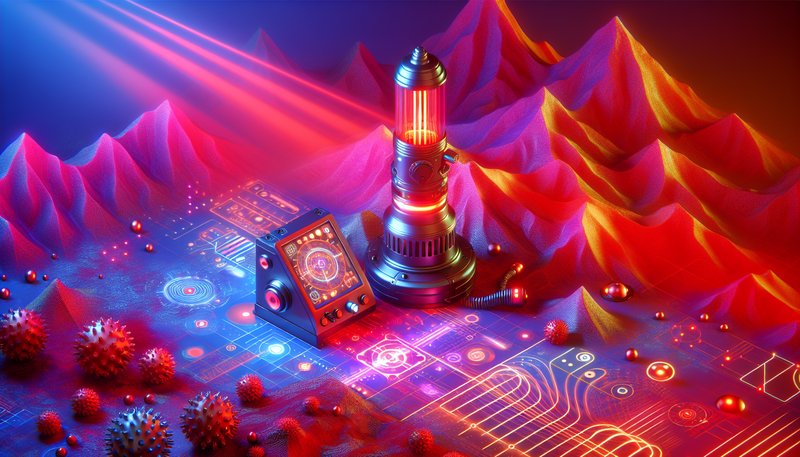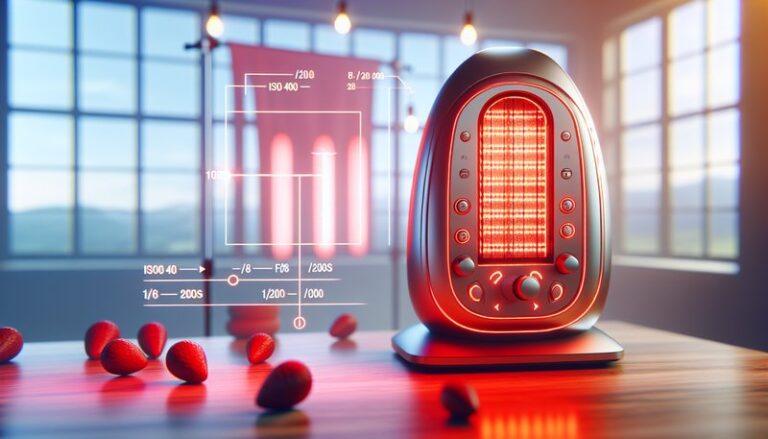Can I Do Red Light Therapy After Laser Treatment?
Can I Do Red Light Therapy After Laser Treatment?
Is it safe to combine red light therapy with your post-laser treatment recovery?
In this article, we will explore the relationship between red light therapy and laser treatments, particularly focusing on how they can be integrated into a skincare routine. We’ll discuss the benefits of both treatments, the considerations you should keep in mind, and whether it is advisable to use red light therapy following laser procedures.
Key Takeaways
- Combining red light therapy with laser treatments can enhance skin healing and reduce recovery time.
- Consulting with a medical professional is crucial before starting red light therapy post-laser.
- Understanding your skin type and the nature of your laser treatment can help determine the best approach to using red light therapy.
What is Red Light Therapy?
Red light therapy (RLT), also known as low-level laser therapy (LLLT), is a treatment that uses specific wavelengths of light to penetrate the skin’s surface. This therapy stimulates cellular function, promoting healing and reducing inflammation. Commonly used for skin rejuvenation, pain relief, and wound healing, red light therapy has gained popularity in both clinical and home settings.
RLT is typically applied through a series of sessions using red light devices, which may range from handheld units to larger panels designed for full-body treatment. The therapy harnesses the power of red and near-infrared light to encourage the body’s natural healing processes.
What are the Benefits of Red Light Therapy?
The advantages of red light therapy extend across various applications, including skin care and overall health improvement.
Promotes Wound Healing
RLT accelerates the healing process by enhancing cellular metabolism and promoting collagen production. This can be particularly beneficial following skin treatments like laser resurfacing, which can induce micro-injuries for rejuvenation.
Reduces Inflammation
One of the significant benefits of RLT is its ability to reduce inflammation. This property can help mitigate post-laser treatment swelling and redness, making it an attractive option for those recovering from skin procedures.
Enhances Skin Appearance
Regular use of red light therapy can improve skin texture and firmness. For those who have undergone laser treatments aimed at reducing signs of aging or scarring, RLT can complement these effects by promoting an even skin tone and reducing wrinkles.
Improves Circulation
Red light therapy can enhance blood flow, delivering more oxygen and nutrients to damaged tissues. This improved circulation aids in the recovery process, making it a suitable option for post-laser care.
Find insights in Is Red Light Therapy the Same as Low Level Laser?
Is it Possible to Use Red Light Therapy After Laser Treatment?
Yes, it is possible to use red light therapy after laser treatment, but timing and caution are essential. Laser treatments vary widely in their intensity and recovery impacts. While some patients can benefit from RLT shortly after a mild procedure, those who undergo more aggressive treatments may need to wait for an appropriate healing period.
What are the Advantages of Using Red Light Therapy After Laser Treatment?
Accelerated Recovery
Incorporating RLT into your post-laser routine can speed up recovery times, allowing you to return to your normal activities sooner.
Reduced Discomfort
For many patients, red light therapy can help alleviate discomfort associated with healing post-laser, minimizing the need for additional medications.
Improved Results
Patients who use red light therapy in conjunction with laser treatments often report better aesthetic results, with enhanced skin rejuvenation outcomes.
Minimized Risk of Complications
Using red light therapy post-laser can help reduce the risk of complications such as infections or prolonged redness by promoting faster healing.
What are the Disadvantages of Using Red Light Therapy After Laser Treatment?
Timing is Crucial
If not timed correctly, using RLT too soon after laser treatment could potentially irritate the skin. It’s essential to follow a skincare professional’s advice regarding when to start therapy.
Individual Skin Responses
Everyone’s skin responds differently to both laser and RLT. Some may experience sensitivity or adverse reactions, requiring a tailored approach.
Not a Replacement for Professional Care
While RLT can enhance healing, it shouldn’t replace the care and advice of healthcare professionals following a laser treatment.
What are the Things to Consider Before Using Red Light Therapy?
Before starting red light therapy after laser treatment, several factors should be taken into account.
Consult with a Dermatologist
It’s crucial to have a discussion with your skincare professional before beginning RLT post-laser to ensure it aligns with your specific treatment plan.
Understand Your Skin’s Health
Be aware of your skin’s condition and how it reacted to the laser treatment. Healing can vary among individuals, and knowing your skin type can help you make informed decisions regarding RLT.
Follow a Proper Timeline
Make sure to follow recommended timelines for starting RLT after laser treatment. This may depend on the type of laser procedure performed and the condition of your skin.
What are the Alternatives to Using Red Light Therapy?
If you’re unsure about combining red light therapy and laser treatment, other options may also support recovery.
Cool Compresses
Applying cool compresses can reduce swelling and soothe discomfort right after laser procedures, serving as a simple alternative for immediate relief.
Hydrating Serums
Using gentle, hydrating serums formulated with hyaluronic acid and peptides can help moisturize and nourish the skin during the healing phase.
LED Masks
LED therapy masks can offer a gentler light therapy alternative with multiple wavelength settings tailored to various skin concerns, suitable following laser treatments.
Conclusion: Is it Recommended to Use Red Light Therapy After Laser Treatment?
In summary, red light therapy can be a beneficial addition to your recovery routine following laser treatments. By understanding the benefits, timing, and individual skin considerations, you can make an informed decision. Always consult with a healthcare professional to ensure your approach is safe and effective.
Frequently Asked Questions
Can I do red light therapy the same day as laser treatment?
It’s generally not recommended to receive red light therapy on the same day as laser treatment. It’s best to wait until your skin has begun healing, as advised by your dermatology professional.
How long should I wait to start red light therapy after laser treatment?
The waiting period varies based on the type of laser used and your skin’s response. A typical recommendation might range from a few days to a couple of weeks, but always confirm with your healthcare provider.
Read our take on Does Red Light Therapy Aid Weight Loss?
Are there any side effects of using red light therapy?
Red light therapy is generally safe and well-tolerated, but some individuals may experience temporary redness or irritation. If this occurs, it’s best to consult a professional.
Can I perform RLT at home after laser treatments?
Home-use devices can provide benefits, but it’s best to discuss their use with a professional to ensure it aligns with your specific recovery plan.
What should I look for in a red light therapy device?
When selecting a red light therapy device, consider the wavelength (between 600-900 nm is optimal), the size of the treatment area, and the quality of the device to ensure effective results.





